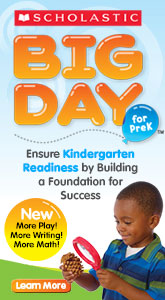ExchangeEveryDay Past Issues
 << Previous Issue
| View Past Issues | | Next Issue >>
<< Previous Issue
| View Past Issues | | Next Issue >> Outdoor Activity Centers
March 6, 2015
The true method of knowledge is experiment.
-William Blake
-William Blake
In Cultivating Outdoor Classrooms, Eric Nelson talks about the importance of establishing outdoor activity centers:
"The most important point to remember while you're implementing the program is that each activity needs an outdoor home, its own space, just as it does indoors. Some of these spaces may be permanent, like those for swings or a sandbox. Some may move locations, like places for reading books, play with water, or using loose parts on the grass. Even though these activities may move, the spaces in which they can occur should be identified.
"....staff members should compile a list of all the activities they and the children want to take outside and then identify the following:
- how these activities will be accommodated in the yard
- where storage will be located
- how activities will be carried out in different weather and seasons
- how children can identify areas to use for specific activities
- how staff will be assigned responsibility for the space
- what kinds of maintenance will be required.
 |
Offer expires March 6, 2015!
|
View all Exchange books
|
|
20% discount does not apply to tax or shipping, if applicable.
May not be combined with any other offer. Free shipping applies to continental US only.
Offer expires March 6, 2015, at 11:59 pm Pacific Time. |





Comments (1)
Displaying 1 CommentCenter for the Study of Biracial Children (CSBC)
Denver, CO, United States
I do not really agree with this. To me probably the main advantage of the outdoor environment is that it is not the same as the indoor environment, and that this unique space should be used very differently. Specifically, 1), students should be encouraged to create and define their own spaces, without teacher direction (i.e. impose their own meaning), 2) students and teachers should find ways to creatively connect different spaces in the outdoors (I believe it was Elisabeth Jones who showed us how combining materials and spaces increase their complexity), 3) uses of the outdoor spaces should dramatically change based on the weather and the seasons, and 4) the outdoor spaces should change continually based on the experiences and ideas children bring to the program from their homes and communities. For a variety of reasons the outdoor space is more flexible than the indoor space, and we need to capitalize on this flexibility!
Post a Comment